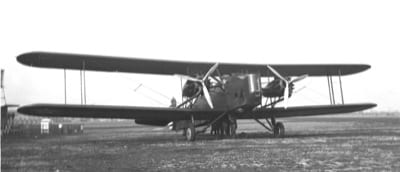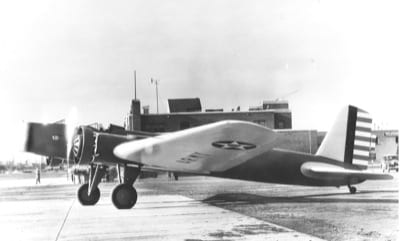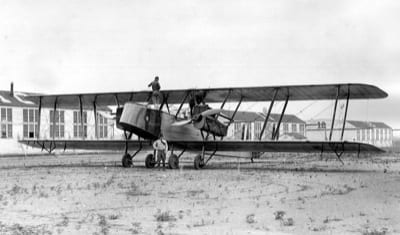
This summer marks the 75th anniversary of one of the most famous aircraft of World War II: The Boeing B-17 Flying Fortress.
The B-17 was originally designed to meet a bomber specification issued by the U.S. Army Air Corps in 1934 for a 250-mph bomber with a range of 2,000 miles and an operating ceiling of 10,000 feet. The Boeing Co., headed by Edward Wells, took up the challenge.
On July 17, 1935, the resulting bomber, Boeing Model 299, was rolled out for public display at Seattle’s Boeing Field. The press was amazed by what was then the largest land plane in the United States. One reporter called it the “Aerial Battle Cruiser” and another the “Flying Fortress.” The second was the name that would be carried by the thousands of B-17s that would eventually be built and serve in the war.
Not all were happy with the name. C.G. Grey, editor of the British magazine Aeroplane, stated in 1941 that the name “Flying Fortress” was “ill-chosen,” because the name implied that it was so heavily constructed that it would be “proof against all engines of war,” but that the Boeing bomber was constructed of thin Alclad sheet, which could be “slit with a knife.”
While the role of the B-17 in World War II was as an offensive bomber, the early B-17s were conceived purely for a defensive mission: The protection of American coastlines from foreign surface fleets. It was this function that probably brought about the term “Flying Fortress.”
In 1938, later models of the 299 — known as Y1B-17s — would fly 725 miles out over the Atlantic on a mission to find the Italian passenger ship Rex in the ocean east of New York and return, a total distance of more than 1,500 miles. But the successful mission almost proved to have negative consequences as, shortly after the over-water flight, the Navy became upset with the Air Corps’ encroachment on its domain. A War Department memo was issued, limiting the bombers’ activities to within 100 miles of the United States coastline.
Notwithstanding the Navy’s reaction to the B-17, the Flying Fortress demonstrated its strategic importance with a non-stop flight from Miami to Buenos Aires, Argentina. The return trip to Langley Field, Va., was the longest nonstop flight in Air Corps history.
NOT THE FIRST
Though the B-17 is remembered as the “Flying Fortress,” it is, in fact, not the first use of the name to a Boeing aircraft. Even though the Oxford English Dictionary traces the use of Flying Fortress back to the B-17 and cites an Oct. 16, 1937, article in The New York Times, I have been able to trace the use of the term back to 1914.
1914: Newest Zeppelins Flying Fortresses: The Nov. 25, 1914, New York Times reported that there were fresh stories from Amsterdam that the Germans were turning out Zeppelins with feverish haste. It was reported that the new Zeppelins were being fitted with a new kind of torpedo, 30 or 40 of which would be carried by each ship. The power of the torpedoes were said to be equivalent to that of a 42-centimeter shell.
1915: Russians bring down big aeroplane prize: A dispatch to the London Morning Post from Petrograd, Russia, reported that the Russians had recently brought down three aeroplanes, among them one that was called “Germany’s new Flying Fortress.” Nicknamed “Two Tails,” the machine was armored and had twin engines of the Albatros or Mercedes type. It carried nearly a ton of bombs and a quick-firing machine gun and two maxims. The crew consisted of the pilot, a mechanic, an observation officer and three gunners. The Russians said that upon examination the machine proved to be little more than a German version of the Russian Sikorsky.
1923: Air Armada flies 800 miles to Maine: This article reported that an armada of 16 huge Martin bombers (probably MB-2s) flew the 800 miles from Langley Field, Virginia, to Bangor, Maine, in 8-½ hours. It also said that the maneuvers “were replete with thrills…for those who watched the forms of the flying fortresses silhouetted in the sky.”
1928: New Flying Fortress inspected by Davison: On Feb. 15, 1928, Assistant Secretary for War for Air, F. Trubee Davison, inspected the first of more than a score of the latest type of bombardment planes built for the Army Air Corps. These were Keystone LB-5 Pirate bombers.

1931: Building our biggest Flying Fortress: This report from The New York Times discussed construction of the giant new airship, the USS Akron. Indeed it was to be a giant: “Our new Navy dirigible will dwarf all predecessors; it will be a third larger than the Graf Zeppelin.”
1931: Giant Flying Fortress tested in Seattle: No, the date 1931 is not wrong. The first Boeing to be called a Flying Fortress was not the B-17 — it was the B-9 all-metal twin-engine bomber. The Decatur Evening Herald of May 6, 1931, reported that plane was completed after more than a year of secret construction. The coverage called it “Uncle Sam’s latest flying fortress.”

1934: New attack type: In January 1934, the new Curtiss A-12 attack aircraft was called a Flying Fortress for its six machine guns and ability to carry bombs.
1935: Even after the term “Flying Fortress” had been applied to the Boeing B-17, it was used in the press in September 1935 to refer to the Martin bomber that had flown in competitions at Wright Field against the Douglas B-18 and the Boeing 299. The U.S. Air Service news reported they were authorized by the War Department “to give our readers the description of the flying fortress designed and built by the Glenn L. Martin Co.” This bomber was known as the Martin model 146. It finished third in the tests. The Boeing 299 crashed during the tests so the contract was given to Douglas for its B-18.

Even though there were many uses of the term “flying fortress” applied to aircraft over the years, the name will truly and deservedly belong to the Boeing B-17. In spite of C.G. Grey’s comments, the aircraft proved to be very strong and brought many a crew back after the planes experienced severe battle damage.
Dennis Parks is Curator Emeritus of Seattle’s Museum of Flight. He can be reached at [email protected].
